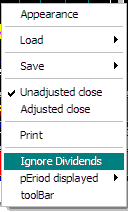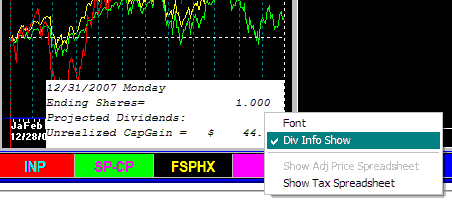FT4Web by Investors FastTrack |
Distribution Adjustment Work SheetThis worksheet shows how to compute distribution-adjusted total return between any two points. Fund and stock prices must be adjusted for distributions (the white dots on the redline of the T Chart) to reflect an accurate picture of the fund performance over time. FastTrack computations reinvest distributions at the closing price on the x-dividend day. All historical prices from the day before the x-dividend date are reduced backward in time. When a split occurs, prices are reduced by the split ratio. For example, when 3-for-1 split occurs, prices before the x-dividend date will be multiplied by 1/3. A 1-for-5 reverse split is handled the same way: Prices before the x-dividend date will be multiplied by 5. The worksheet below shows how to compute distribution-adjusted prices and compute a total return between any two points with intervening distributions. Adjusted Price and Total Return Worksheet* Distribution Adjustment Example (without stock split) * Distribution Adjustment Example (with stock split)
BP= First CP= Last CP = ____________% $___________ $___________ |
| X-Date of Distribution (date of the white dot) |
Closing Price | Distribution Amount | Split Ratio |


